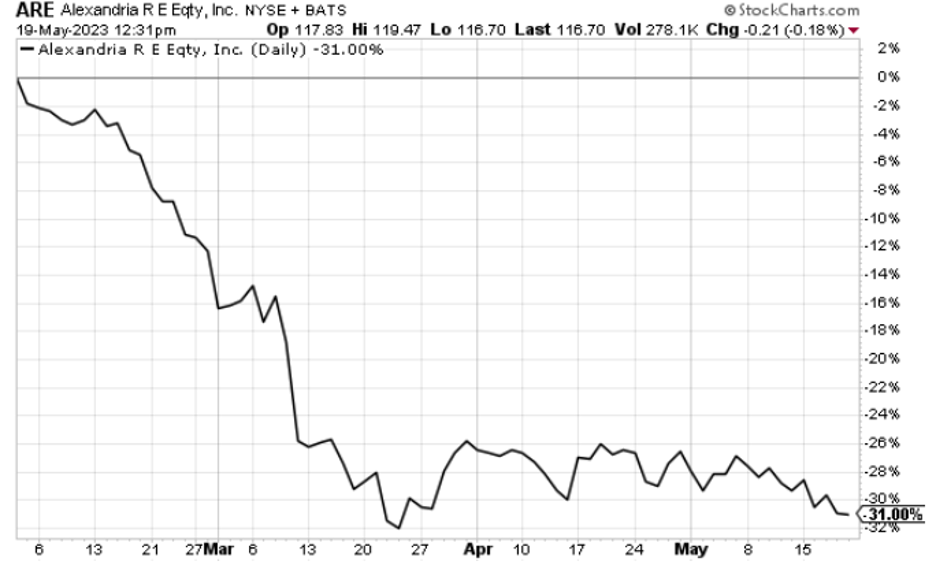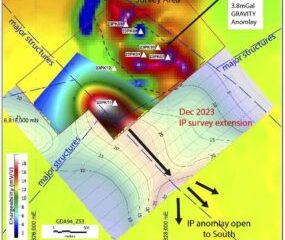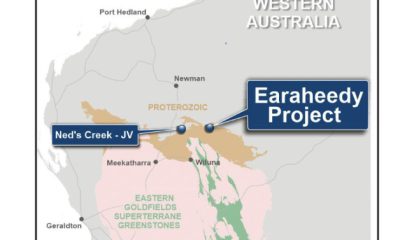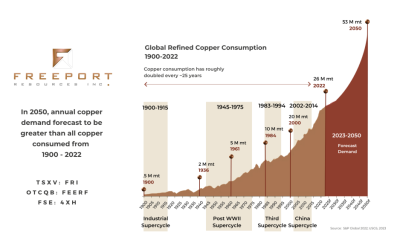Uncategorized
Fed Hawks and Doves Send Conflicting Signals
Hawkish/dovish messages from Fed members … the risk of a “wave of defaults” in commercial real estate … but home building stocks are soaring ……

Hawkish/dovish messages from Fed members … the risk of a “wave of defaults” in commercial real estate … but home building stocks are soaring … checking in on our ALB trade
We’re in a busy news cycle. Let’s jump around to several of the top stories likely impacting your portfolio.
Will there be a June pause or not?
Directly following the Federal Reserve’s May FOMC meeting a few weeks ago, the broad consensus was that the Fed was done hiking rates.
The removal of key language in the official policy statement, combined with Fed Chair Jerome Powell’s dovish hat-tip to that removed language in his press conference, seemed to indicate that a Fed pause in June was all-but-certain.
As recently as May 10th, Wall Street traders were putting the odds of this June-pause at 95%.
Well, last week, one Fed president did her best to throw cold water on this certainty.
From CNBC last Thursday:
Dallas Federal Reserve President Lorie Logan said Thursday that the economic data points so far don’t justify skipping a rate increase at the central bank’s next meeting in June.
While noting some progress in bringing down inflation and cooling the labor market, Logan said the Fed still has work to do in achieving its goal for price stability. Logan is a voting member this year of the rate-setting Federal Open Market Committee.
And this is from Logan directly:
The data in coming weeks could yet show that it is appropriate to skip a meeting. As of today, though, we aren’t there yet.
But the very next day, Fed Chair Powell seemed to contradict her with dovish comments.
From Powell:
Developments [in the banking sector], on the other hand, are contributing to tighter credit conditions and are likely to weigh on economic growth, hiring and inflation.
So as a result, our policy rate may not need to rise as much as it would have otherwise to achieve our goals…
…Given how far we’ve come, as I noted, we can afford to look at the data and the evolving outlook.
So, score one for the hawks, one for the doves. Who’s got the tiebreaker?
Well, this morning, Minneapolis Fed President Neel Kashkari rode the fence like an expert. From Kashkari, speaking about pausing rate hikes in June:
Right now, it’s a close call either way, versus raising another time in June or skipping.
Some of my colleagues have talked about skipping. Important to me is not signaling that we’re done.
If we did, if we were to skip in June, that does not mean we’re done with our tightening cycle. It means to me we’re getting more information.
A hawk/dove mixed bag.
A moment ago, we noted that Wall Street traders were putting the odds of a June-pause at 95% very recently. Well, in the wake of all this confused Fed chatter, that certainty has dropped to just 72%.
We still believe we’ll get a Fed pause in June. However, it’s clear there’s a stubborn hawk-streak running through several Fed members. Given this, the likelihood of rate-cuts – which is what will really ignite a market rally – are slim-to-none anytime soon barring a recessionary meltdown.
And that means the greater issue today is how resilient the economy will be in the face of these historic rate hikes that could remain elevated for, potentially, many months.
The Nasdaq has raced ahead 21% so far in 2023 – much of that based on Wall Street’s belief that the Fed will pivot and cut rates this year.
What happens to those gains if the Fed doesn’t deliver as expected?
That’s what concerns us.
Speaking of the full effect of higher rates, we’re beginning to see their impact in the commercial real estate sector
Regular Digest readers know that for months, we’ve been running a “commercial real estate watch” segment to monitor this critically-important sector of the U.S. economy.
The same factors that just resulted in a handful of banking failures are creating cracks in the foundation of the $20-trillion commercial real estate sector. If defaults snowball, it will have an enormous impact on the U.S. economy.
Last Thursday brought the latest story for our real estate watch. From Yahoo! Finance:
Commercial real-estate (CRE) prices in the US saw their first decline in 12 years last quarter, and are likely to drop further, Moody’s Analytics has warned.
The drop was less than 1% and was brought on by a fall in the prices of offices and apartment buildings, according to a Bloomberg report citing Moody’s analysis, which pulled data from courthouse records of transactions.
Now, the kneejerk reaction might be “less than 1%? What’s the big deal?”
Well, first, just note that we’ve gone 12 years without any price-declines. So, this pattern-break itself is notable.
Second, remember that the commercial real estate sector is not one big monolith that rises and falls in unison. It’s comprised of thousands of different buildings that have varying loan interest rates, loan durations, rental rates, and overall property values.
These variables take time to change, and aren’t felt all at once – it’s a bit like watching a massive freighter out on the ocean. They can’t turn on a dime. Some of them require miles to change direction.
But, today, the direction is changing. And we need to be aware of what that could mean for tomorrow.
Back to Yahoo! Finance:
[Moody’s] chief economist Mark Zandi said he anticipates more CRE price declines – and recently forecast a 10% plunge from their peak by mid-decade, along with a wave of defaults.
If the US economy slips into a recession, however, the declines could get worse, according to him. “We’re on a razor’s edge here,” Zandi told Bloomberg.
Many office REITs are already suffering. For example, here’s Alexandria Real Estate Equities (ARE), down 31% since early-February:
 Source: StockCharts.com
Source: StockCharts.com
We urge you to be aware of how much exposure your portfolio has to commercial real estate, as it appears there’s more pain coming for this sector.
However, over in the home building sector, pain is nowhere to be found
Here’s the quick sum-up of what’s happening:
Homeowners who are sitting on dirt-cheap mortgage rates from a few years ago have zero interest in selling in this market.
So, with very little existing-home inventory available, would-be homeowners have little option but to turn to newly-constructed homes. This is massive tailwind for home builders.
Builders are feeling so good that, last week, the National Association of Home Builders (NAHB)/Wells Fargo Housing Market Index (HMI) showed that builder confidence in the market for newly built single-family homes rose 5 points to 50 in May.
The snowballing optimism just keeps growing. This is the fifth straight month of gains and the first reading of builder sentiment since July that wasn’t negative.
With this in mind, let’s check in on our ITB trade.
In our April 20, 2022, Digest, we suggested that aggressive investors could jump into an iShares Home Construction ETF (ITB) trade. ITB holds homebuilding heavyweights including DR Horton, Lennar, NVR, Pulte, and Toll Brothers.
Our trade suggestion was due to the potential for major, multi-year gains we see coming after the market bottomed from recent basement prices.
Since then, ITB has soared 30%.
 Source: StockCharts.com
Source: StockCharts.com
Given the macro dynamics impacting the housing market today, and what appears to be a Fed that won’t be cutting rates anytime soon, we expect more gains from these home builders.
While we’re at it, let’s check in on another official Digest trade
Four weeks ago today, we recommended Digest readers consider a trade in Albemarle (ALB), a world-class lithium company based in Charlotte, North Carolina.
You can re-read that Digest here, but in short, after Chile’s President Gabriel Boric announced his plans to nationalize the country’s lithium industry, ALB tanked 10%.
We noted this made no sense for a couple of reasons…
First, ALB management said the news will have “no material impact on our business.”
Second, if anything, ALB should have climbed as it’s one of a few U.S.-based lithium companies, and as The New York Times recently reminded us, “the Biden administration…has allocated billions of dollars to encourage companies to develop lithium mines and refineries in the United States or in countries with which it shares close political and economic ties.”
In any case, the kneejerk 10% selloff resulted in massively oversold conditions in Albemarle’s stock according to its Relative Strength Index (RSI) level.
We saw the potential for short-term gains from a mean-reversion rally, combined with long-term gains from lithium’s powerful macro growth story. After all, lithium is a key metal necessary for electric vehicle batteries, the transition to clean energy, and next-generation tech products. As such, demand for it is going to skyrocket in the coming decades.
So, what’s happened since?
ALB jumped as high as 21%, before pulling back to 19% as I write Monday morning.
 Source: StockCharts.com
Source: StockCharts.com
Congrats to any Digest readers who took this trade.
If you jumped in to grab some short-term profits, you might consider taking some money off the table.
Though ALB’s RSI level never reached overbought conditions, it recently hit a local peak, and appears like it might be slowing down. While no one has a crystal ball, this hints at more price weakness in the immediate future.
However, if you jumped into ALB based on the overall lithium growth story, hang tight. We believe the long-term gains are just getting started, though they won’t be coming in a straight line.
One thing to remember for long-term investors…
Traders are nervous about ALB’s immediate future because of the risk of a global recession. Given this, the stock’s price-to-earnings ratio clocks in at an eyebrow-raising 6.67 as I write. That’s astonishingly cheap.
And though it could grow cheaper if we do fall into a recession, remember how important lithium is to the megatrends of electric vehicles, the green energy transition, and next-gen technology products.
Put it all together, and we believe today’s ALB price still offers investors a good long-term entry point.
Finally, a quick note – tomorrow, legendary investors Louis Navellier and Whitney Tilson are revealing the same, big market prediction
While regular Digest readers are very familiar with Louis, Whitney is a market legend in his own right, with CNBC even naming him “The Prophet.”
Both of these market veterans share the same opinion about a market event that’s about to take place. This event involves Las Vegas, of all things.
We’ll bring you more details on this in tomorrow’s Digest, but click here to ensure you don’t miss any details. There’s no live event you have to make time for in your schedule. Rather, Louis and Whitney will release the information to you directly.
Click here for the full story.
Have a good evening,
Jeff Remsburg
The post Fed Hawks and Doves Send Conflicting Signals appeared first on InvestorPlace.
















